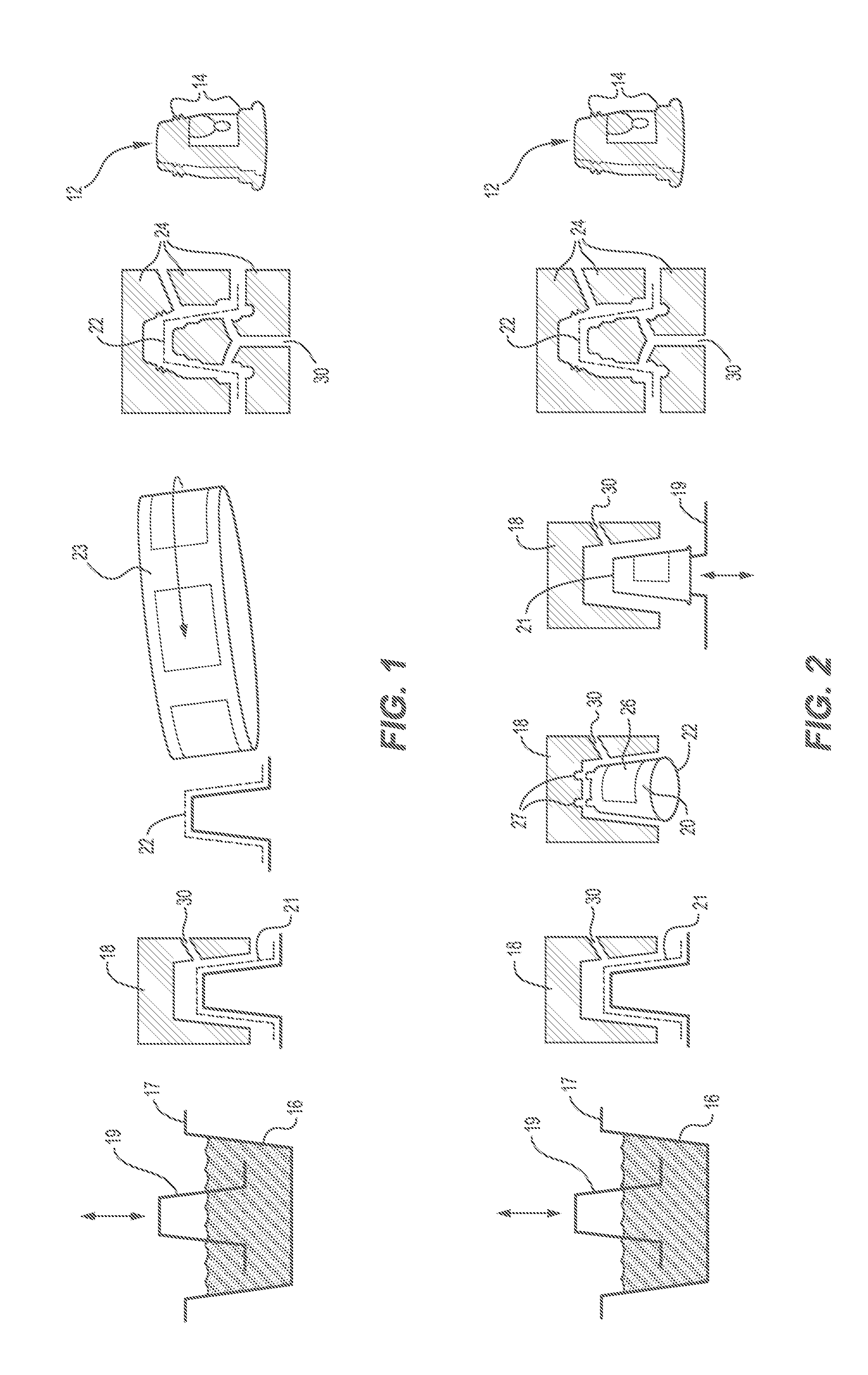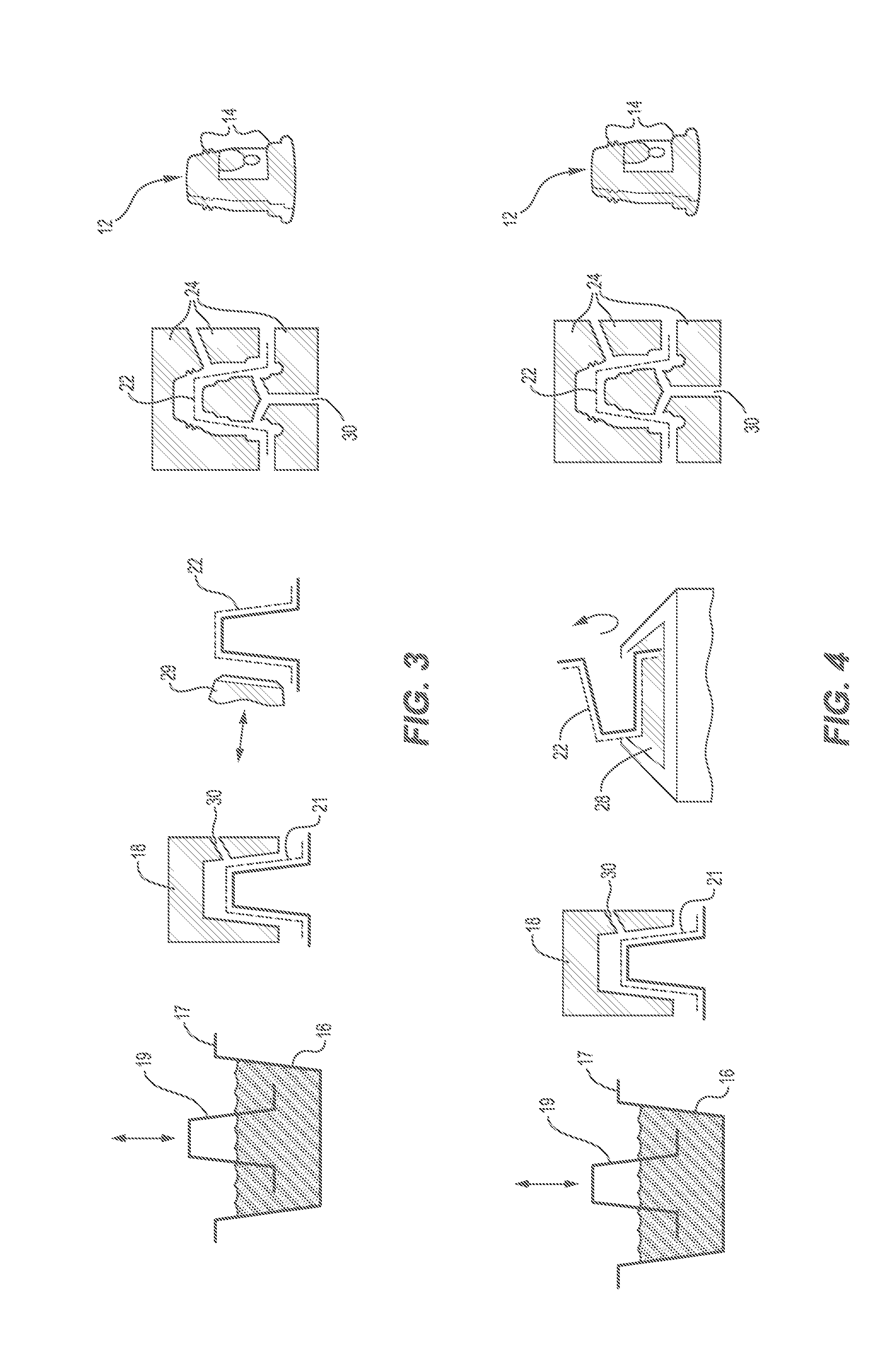The creation of compelling and high quality packaging for
consumer durables is well established and is executed in a variety of forms and formats known in the prior art; however each of the prior art formats and methodologies have their own particular limitations.
Such physical requirements of the packaging in question, often require complex internal structures or substructures to protect the packaged product which can introduce considerable cost and complexity to the packaging products commonly available.
The core packaging functions to contain, protect, preserve and promote the products in question, are often offset by substantial cost and lack of
sustainability.
Sustainability is also another key issue and an increasingly politicised issue of keen interest in the minds of consumers who may consider the type of packaging used for a product as part of any “buying decision”.
Paper and
cardboard packaging is low cost and has the ability to accept printing and finishing to a very
high standard but has a principal restriction by limitation of its form.
The inability to readily conform
cardboard to other than linear and planer shapes does not allow this material to be adapted for brand or product discrimination in the marketplace as all packaging based on
cardboard incorporates substantial planar elements.
The ubiquitous nature of cardboard also means that it is difficult for suppliers to create perceived value around the product without resorting to complicated treatments of the boxes, including lamination and use of metallic and plastic films etc.
The more complicated the printing and laminating and / or folding involved in any manufacture of a packaging product, the more costly the end product results which must be passed onto the consumer.
In addition, a number of the perceived high quality treatments in cardboard and paper packaging, require the use of processes that are not environmentally sustainable, or which hinder the recycling of the packaging and therefore make the packaging less
environmentally friendly than it otherwise could be.
Use of recycled materials is also limited by a reduction in strength of cardboard; the main process used for packaging materials is the Fourdrinier process.
These particular features are compromised by the use of recycled pulp because of the changes occurring in the pulp particles during recycling processes.
In addition, legislation governs the application and use of recycled materials in this process due to
hygiene issues.
Most thermo-plastics are derived from oil and as such the price of this commodity is invariably increasing, in addition to the
perception of the non-renewable nature of this commodity, it suffers a generally poor public
perception.
Most thermo plastics are readily recycled, although the variety of plastics complicates the sorting process.
An increasing use of organically-derived plastics to address some of the environmental concerns are provided for in the prior art, however, organically-derived materials can also have problems, in particular the so called “bio-polymers”, which may not be as sustainable as they first appear.
However the energy required in their creation is not returned or reduced by this process and in a number of cases,
polylactic acid is inferior and / or requires more material to equal the performance of
petroleum based plastics.
However glass as a packaging medium, is heavy, fragile and requires a lot of energy to melt and reform.
Metal itself is however an expensive
raw material and in comparison to paper, the
unit cost of a metallic container is far greater than the similar piece of packaging made from plastic or cardboard.
The use of metallic boxes and packaging is generally less sustainable than the previously described materials and requires substantial energy for recycling.
In addition, the use of
metallic materials for packaging involves the use of a finite resource and the
mining industry and
forging of metals for packaging is increasingly being perceived by the consuming public as environmentally questionable.
Formed
pulp paper has a restricted and limited public perception at this point in time due to its principal association with low end single colour products like fruit trays or egg boxes.
The key
disadvantage of
pulp fibre packaging from a commercial point of view is the limitation to the use of a single colour throughout the packaging material.
In addition, once the pulping material has been formed and dried into the final moulded shape, it is not possible to economically print upon or decorate such surfaces.
Whilst it is possible to place
adhesive stickers on such packaging,
adhesive stickers are only able to be applied economically to planar surfaces which provide distinct limitations to the form and design of such packaging products.
In addition,
adhesive stickers are not visually appealing because they are not fully integrated with the design and manufacture of the product and the application of adhesive labels requires precision and specific care in alignment and places limitations on any high speed industrial process.
However, such films have disadvantages including their appearance as add-ons or additions and
distraction from the integrated perception of the whole design; such products are also limited by the compound nature of the surface to which they can adhere where extremely deep valleys or ridges are not possible without the film ripping or folding which compromises the final product; and finally, the nature of the adhered film is such that it is necessarily a plastic adhered to paper pulp which then compromises recycling and
sustainability.
However, the previously described methods involve complex techniques to faithfully reproduce the required images on the final product.
In addition, the previously described printing methods rely on
silicon coated paper or
polymer web to carry the printing and apply the printing in one off applications of the printing to the pre-form which greatly limits the speed of manufacture and limits the options for
automation.
 Login to View More
Login to View More 


